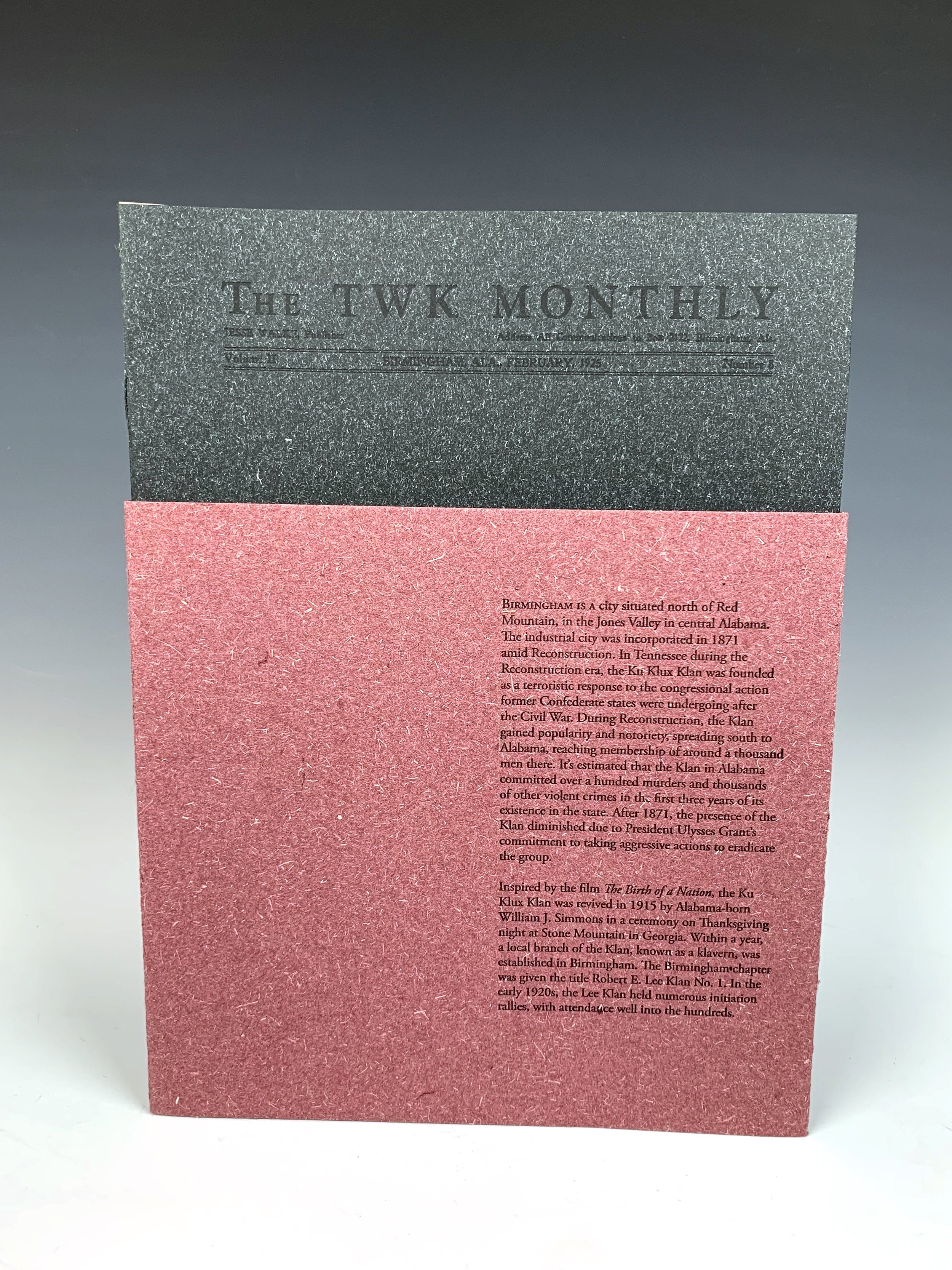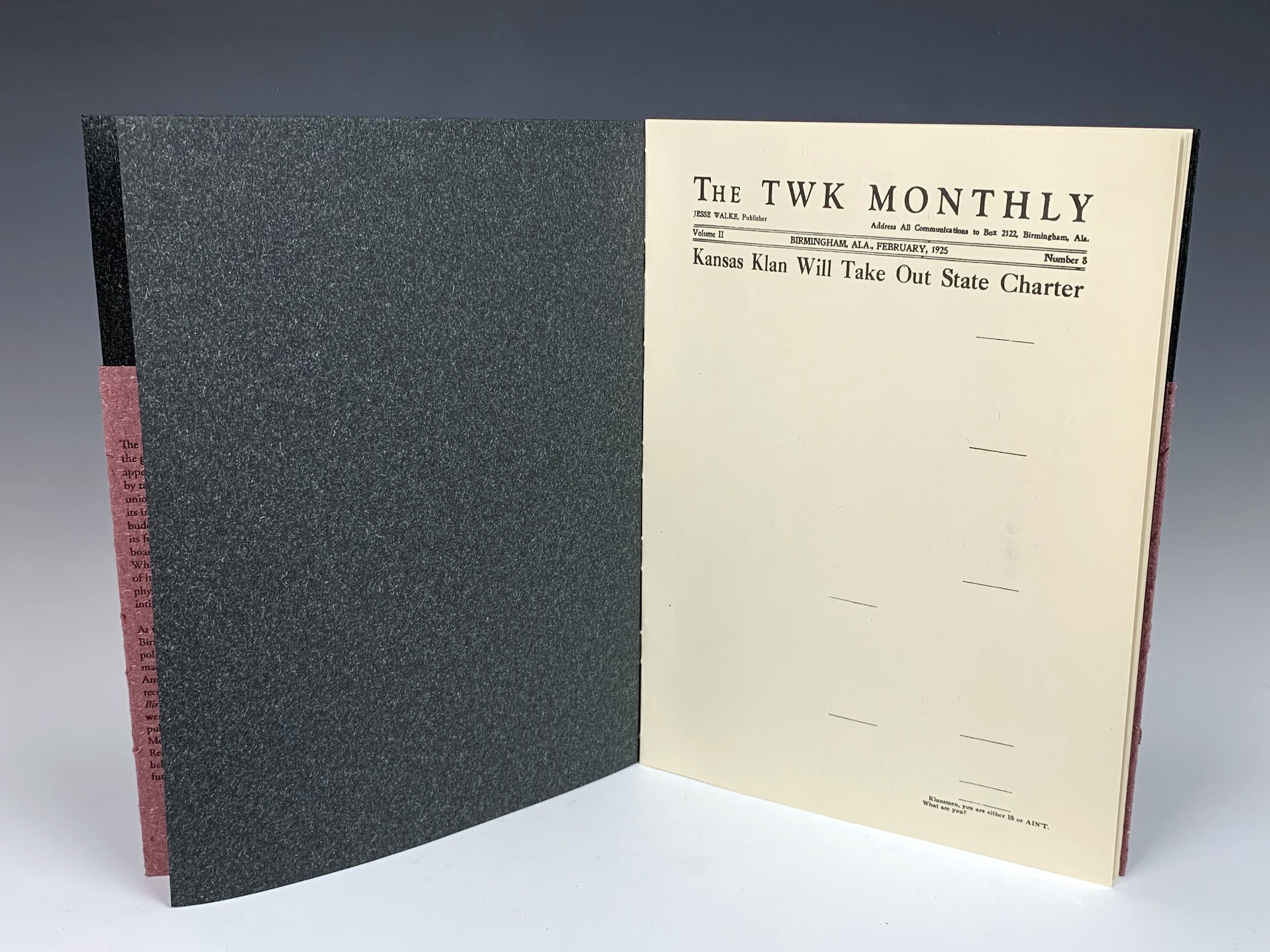Artist’s book, risograph and letterpress, 8.5”x11” (closed), edition of 22.
T.W.K. Monthly is an examination of how the Ku Klux Klan’s use of print media was a means to maintain and grow economic power in early 20th century Birmingham. In the book form, I make this argument by presenting my original research and including representations of the primary source documents. My method of reproducing an edition of a Klan-published newspaper removes any power the propaganda once had, and the object now serves to reveal the true intention of the newspaper and acts as a record of klan affiliation. In taking this document from the archives and reproducing it in this manner, I aim to shed light on this history and use the power of my press to address abuses of the past.
I created a facsimile of an edition of the TWK Monthly, a newspaper published by the Birmingham chapter of the KKK, using digitized versions of the newspaper. All aspects of the facsimile are accurate to the 1925 edition, including paper size and content; however, I altered the reproduction by removing all of the text from the articles. I did not want to perpetuate the propaganda of the Klan by reprinting the text, and I chose to highlight that the majority of the paper is advertisements rather than new. Without the text, the reader can see how the ads take up most of the pages; they can focus on reading the ad copy more closely in order to see the language used and to see how centrally located these businesses were within the city. In this form, it’s clear that the publication’s primary purpose was as a tool for increasing economic power.
The facsimile pages were printed using a risograph copy machine which provided a fast, economic printing option and allowed me to easily reproduce all the pages of the newspaper. For this portion of the book, my priority was creating a full-scale facsimile in a large edition size true to the original printing intention, which at the time of the TWK Monthly’s creation would not have been fine press printing, but rapid and simple printing.
In an effort to ethically present this information, I bound the facsimile with black endsheets and housed the entire book in a wrapper, both of which provide historical information. The cover wrapper contains an essay I researched and wrote, which gives the reader context for the object, its position in history, and my proposal of its true purpose. The endsheets and wrapper are letterpress printed on higher quality paper. In this way, a hierarchy is created among the printed material in my book, and the contextual information is given more weight and power than the interior pages of the facsimile.




